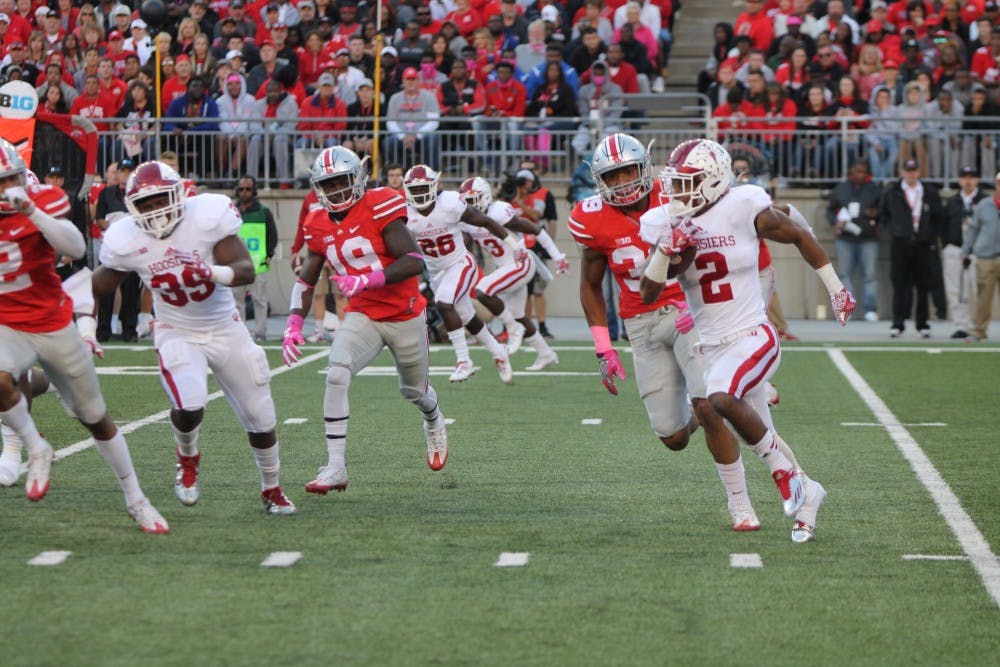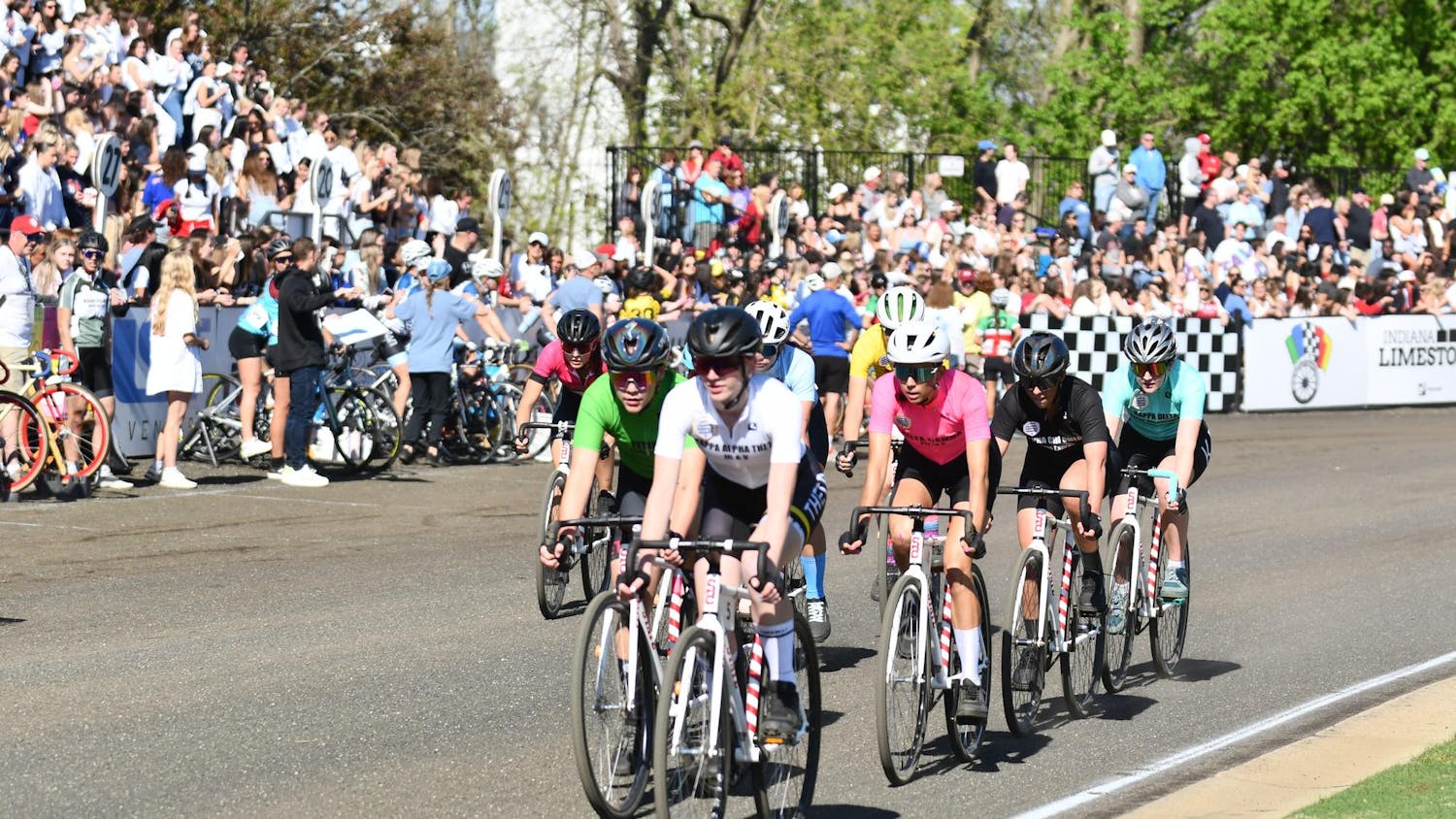IU ran the ball 40 times in its loss to No. 2 Ohio State on Saturday, and that wasn’t even as many times as it wanted to hand the ball off.
The Hoosiers wanted to run the ball 50 times, IU running backs coach Deland McCullough said.
That was IU’s game plan against a team that surrendered the fewest rushing yards in the conference and hadn’t allowed a rushing touchdown in five games.
IU fell short of the 100-yard mark for the first time this season. The Hoosiers recorded 99 yards and averaged less than 2.5 yards per carry. Junior quarterback Richard Lagow threw for only 182 yards, his fewest so far in 2016.
“We knew we’d run the ball to establish a mentality and keep the chains moving and not become 100 percent pass-oriented,” McCullough said. “The thing is, when we had the opportunity to keep drives going, it just didn’t happen.”
IU Coach Kevin Wilson addressed the play-calling throughout his press conference Monday. The coach said the game plan was to run in the red zone, but “when it doesn’t work, you should always do something else.”
The Hoosiers didn’t do something else. They continued to run at the Buckeye defense.
After a long 50-yard completion from Lagow to sophomore receiver Nick Westbrook in the second quarter, IU handed off twice to junior running back Devine Redding at the tackles for a loss of five yards to set up a long third-and-15 in Ohio State territory. IU failed to convert and punted.
Down two scores late in the fourth quarter and facing a third-and-1, the Hoosiers ran a rollout pass that fell incomplete. Wilson called a timeout and, after the break, decided on a Redding rush up the middle that failed to move the chains.
“For one reason or another, it wasn’t 11 guys playing together, and we didn’t get it done,” McCullough said.
In 2014, former Hoosier Tevin Coleman rushed for 228 yards and two touchdowns against Ohio State.
In 2015, former IU back Jordan Howard, Redding and then-sophomore quarterback Zander Diamont combined for 177 rushing yards and three touchdowns against the Buckeyes, although 79 came on just one touchdown run by Diamont.
Redding amassed 78 yards on 22 carries, a 3.5 yards-per-carry average, Saturday. Freshman Tyler Natee averaged 2.5 yards per carry, sophomore Mike Majette averaged 0.7 yards per carry, and freshman Devonte Williams had one carry for no gain.
That was against the ninth-best rushing defense in the nation. Now IU welcomes No. 10 Nebraska, which has the 55th-best rushing defense in the country, but McCullough said that won’t change anything for the rushing attack.
“As far as I’m concerned, we haven’t met the upper end of our standard as running backs, so we’re not in any position to look down on anyone or look at anyone’s ranking,” McCullough said. “We’re sitting there saying, ‘Man, we got less than 100 yards last week. We’ve scored one rushing touchdown as a group.’”
The common factor missing from the previous years is All-America senior guard Dan Feeney and senior tackle Dimitric Camiel on the right side of the offensive line.
Feeney has missed the past three weeks with a concussion, and Camiel missed the last two with a bulging disc. IU has averaged just 123 yards on the ground in Feeney’s absence, which ranks among the worst in the Big Ten in that span.
McCullough and offensive coordinator Kevin Johns both said claiming injuries as a reason for a lack of production in the rushing attack is just an excuse, and that the running backs need to perform better.
“There’s an abundance of reasons for why that happened,” McCullough said about the struggles against Ohio State. “But for whatever reason, when it came to us saying, ‘It’s in our hands,’ we didn’t get it done.”




